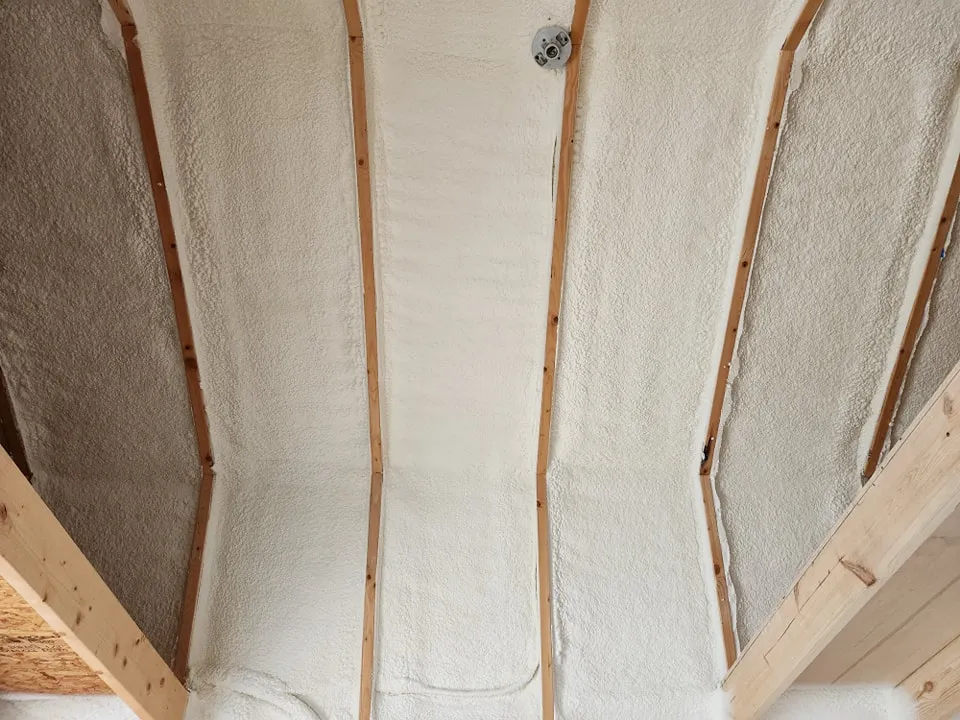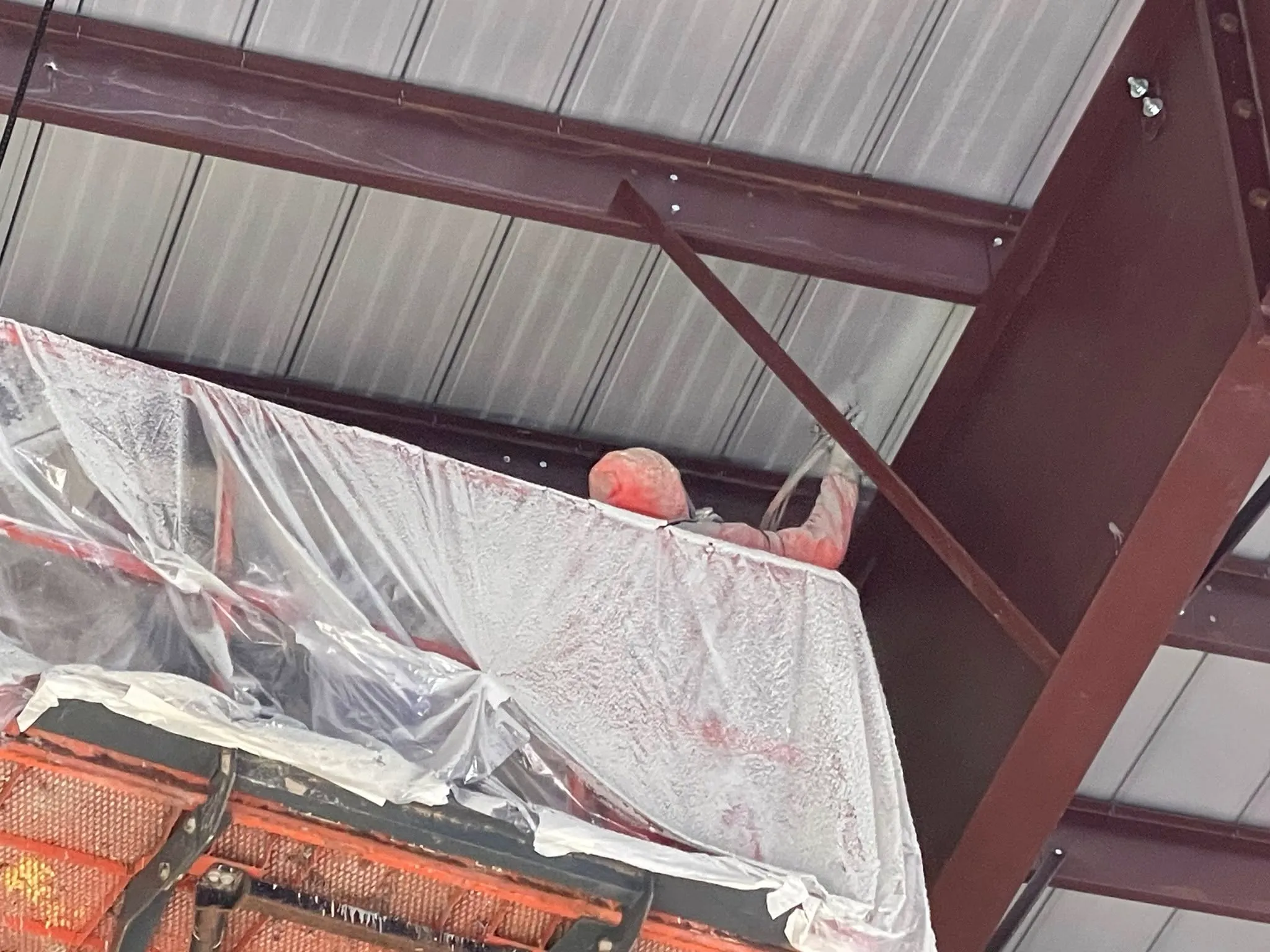
Spray foam insulation delivers a return on investment of 100-300% over its lifetime through energy savings, increased property value, and reduced maintenance costs. The typical payback period ranges from 2-7 years, depending on climate zone, existing insulation levels, and local energy rates. Properties with spray foam insulation see immediate energy bill reductions of 15-50% and home value increases.
This analysis examines real-world performance data from thousands of installations, considering current material costs, labor rates, and energy pricing trends specific to 2025 market conditions. Drawing from extensive field experience with both residential and commercial applications, the following assessment provides property owners with actionable insights for making informed insulation investment decisions.
The primary ROI driver for spray foam insulation stems from reduced heating and cooling expenses. Closed-cell spray foam creates an air barrier with R-values between 6-7 per inch, while open-cell foam provides R-3.5-4 per inch along with superior air sealing properties.
Bonus Tip: Monitor your first full season’s energy bills after installation to establish baseline savings, as many utility companies offer rebates for documented energy efficiency improvements.
Climate zones significantly impact potential savings. Properties in extreme temperature regions – both hot and cold – experience higher returns due to greater HVAC system demands. Mixed climates typically see moderate but consistent year-round benefits.
| Climate Zone | Annual Energy Reduction | Payback Period | 20-Year ROI |
|---|---|---|---|
| Hot-Humid (South) | 25-40% | 3-5 years | 180-250% |
| Cold (North) | 30-50% | 2-4 years | 200-300% |
| Mixed (Central) | 20-35% | 4-6 years | 150-220% |
| Mild (Coastal) | 15-25% | 5-7 years | 120-180% |
Existing insulation conditions dramatically affect potential returns. Uninsulated spaces or structures with damaged insulation show the highest ROI, while properties with newer conventional insulation experience more modest improvements.
Real estate market data from 2024-2025 indicates that spray foam insulation adds measurable value to property resale prices. Energy-efficient homes command premium pricing as buyer preferences shift toward long-term operating cost considerations.
Market research from the National Association of Realtors shows homes with comprehensive spray foam insulation sell 12% faster than comparable properties and achieve sale prices averaging 3-8% above market value. This translates to immediate equity gains that contribute to overall investment returns.
Bonus Tip: Document your insulation upgrade with professional energy assessments before and after installation, as these records substantiate value claims during appraisal processes.
Understanding spray foam’s technical advantages helps quantify long-term ROI benefits beyond simple energy savings. The material’s dual function as insulation and air barrier eliminates thermal bridging while controlling moisture infiltration.
| Performance Metric | Closed-Cell Foam | Open-Cell Foam | Traditional Fiberglass |
|---|---|---|---|
| R-Value per inch | 6-7 | 3.5-4 | 3.1-3.4 |
| Air infiltration reduction | 99% | 95% | 15-25% |
| Moisture resistance | Excellent | Good | Poor |
| Structural strength | Adds 75% racking strength | Minimal | None |
| Lifespan | 50+ years | 30+ years | 10-15 years |
The extended lifespan creates compounding ROI benefits. While traditional insulation requires replacement every 10-15 years, spray foam maintains performance characteristics for decades without degradation.

Spray foam’s durability contributes significantly to long-term ROI through reduced maintenance requirements. Unlike batt or blown insulation, spray foam resists settling, moisture damage, and pest infiltration that typically plague conventional materials.
Property owners report minimal maintenance expenses related to insulation performance over 20-year periods. This contrasts sharply with fiberglass or cellulose systems which require periodic inspection, replacement, and pest control treatments.
Bonus Tip: Schedule annual HVAC system inspections to document improved equipment efficiency and reduced wear, as these factors contribute to extended equipment life and lower replacement costs.
Maximizing spray foam insulation ROI requires expert application tailored to specific building conditions and performance objectives. D&D Insulation LLC specializes in comprehensive insulation solutions designed for optimal energy efficiency and long-term value.
Current market conditions in 2025 present favorable circumstances for spray foam insulation investments. Rising energy costs increase the value of efficiency improvements, while federal and state incentive programs reduce net installation costs.
According to the Energy Information Administration, residential electricity rates increased 18% between 2022-2025, while natural gas prices rose 22% during the same period. These trends accelerate spray foam payback calculations compared to historical analyses.
Material costs have stabilized following supply chain disruptions, with spray foam pricing reaching equilibrium levels that support strong ROI projections. Labor availability has improved, reducing installation delays that previously affected project timelines.
The most cost-effective approach involves coordinating insulation upgrades with major renovations or HVAC system replacements to minimize disruption and maximize efficiency gains.
The decision depends on specific application requirements, moisture conditions, and performance priorities rather than simple cost considerations.
Most residential projects are completed within 1–2 days, with full curing occurring within 24–48 hours, depending on temperature and humidity conditions.
Determining spray foam insulation ROI for specific properties requires professional evaluation of existing conditions, energy usage patterns, and performance objectives. Every building presents unique challenges and opportunities that affect investment calculations.
D&D Insulation LLC provides comprehensive property assessments, including thermal imaging, air leakage testing, and energy usage analysis, to develop accurate ROI projections. Contact [email protected] or call (903) 389-5705 to schedule your consultation and receivea detailed analysis of potential energy savings and property value improvements specific to your situation.
Payback periods typically range from 2-7 years depending on climate conditions, existing insulation levels, and local energy rates. Properties in extreme climates with poor existing insulation see the fastest returns, often within 2-3 years through reduced heating and cooling expenses.
Climate zone, existing building envelope condition, and local energy costs create the largest ROI variations. Properties with significant air leakage and minimal existing insulation in extreme temperature climates achieve the highest returns through comprehensive performance improvements.
Market data shows homes with spray foam insulation sell 12% faster and achieve 3-8% higher sale prices compared to similar properties. The premium reflects buyer preferences for energy-efficient homes with lower operating costs and improved comfort levels.
Spray foam delivers superior ROI through combined insulation and air sealing properties that conventional materials cannot match. While initial costs exceed fiberglass or cellulose, the enhanced performance and 50+ year lifespan create higher long-term returns.
Spray foam requires minimal maintenance compared to conventional insulation materials. The absence of settling, moisture absorption, or pest damage eliminates replacement costs that typically occur every 10-15 years with traditional insulation systems, improving overall investment returns.